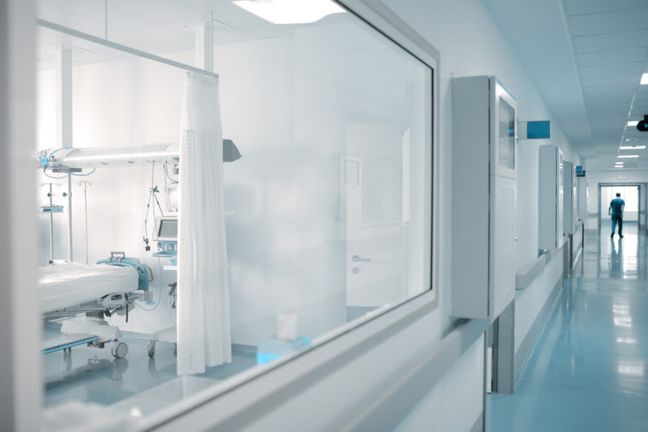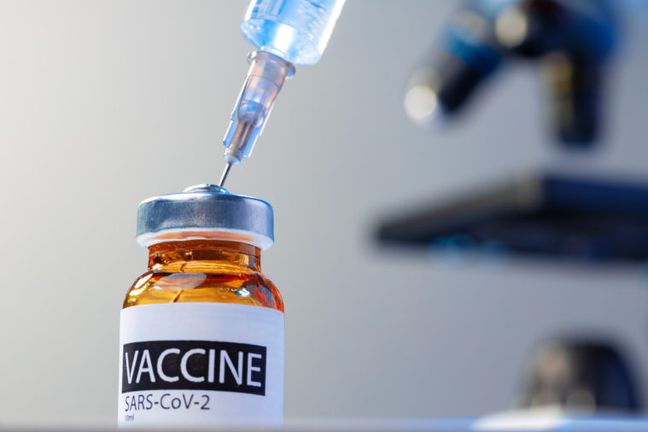An ever-increasing number of plaintiff’s firms in Colorado are sending their clients to medical lien companies, sometimes referred to as medical healthcare funding companies or medical bill factoring companies. These companies partner with plaintiffs’ attorneys and work with physicians to: (1) elicit inflated bills from a healthcare provider; (2) pay the provider a discounted amount to satisfy the bills; and (3) assert a lien for the inflated amount. The sum total of these extremely questionable efforts is to unnecessarily and unreasonably drive up the value of personal injury cases. Meaning plaintiffs’ attorneys demand more money, particularly in low-value soft tissue cases, in addition to the creation of a questionable new revenue stream for medical lien companies to cash-in on personal injury litigation.
The current state of Colorado law limits the methods available for challenging the necessity and reasonableness of a plaintiff’s alleged medical expenses. However, the focus of this article will be to first examine Colorado’s “reasonable value” recovery standard for recoverable past medical expenses and the governing collateral source rule. Next, the article will discuss recent trial court decisions allowing defendants to not only discover medical lien companies’ records, but also seek the admissibility of the amount paid versus the amount billed at trial, as these medical lien companies have been found to fall outside of Colorado’s collateral source rule.
A Personal Injury Plaintiff May Recover the “Reasonable Value” of Past Medial Expenses
In Colorado, medical expenses are recoverable as damages only to the extent they were reasonable, necessary, and proximately caused by the injury flowing from the negligence.[i] While the correct measure of medical expenses damages is the reasonable value of necessary services rendered, rather than the amount actually paid for such services, the amount paid is “some evidence of their reasonable value.”[ii] Testimony regarding medical bills incurred by a plaintiff is admissible to help establish this element of damages.[iii] While a plaintiff’s testimony offers evidence of amounts billed, the reasonableness of the charges under the circumstances “might then be the subject of further inquiry.”[iv]
Colorado’s Collateral Source Rule Prohibits Evidence of Medical Bills Paid by a Private of Government Health Care Insurer
The collateral source doctrine is an evidentiary rule prohibiting admission of evidence that a plaintiff has received compensation from some source other than the damages sought against a defendant. As applied to personal injury lawsuits, for example, some states exclude evidence that a plaintiff’s medical bills were paid by medical insurance or by workers’ compensation. Other states have abrogated this rule to avoid plaintiffs receiving double recovery.[v]
Although Colorado has undergone tort reform on a number of fronts, it still maintains an exceedingly broad collateral source rule. Personal injury plaintiffs are allowed to claim the full amounts charged by their health care providers as damages. The collateral source rule prohibits a defendant from introduction of the amounts paid by an insurer at trial.[vi] While there is a post-trial offset for some “collateral sources,” there is no offset for payments made by a plaintiff’s health insurer.[vii] The same rule applies to Medicaid, Medicare, unemployment, and disability payments made on a plaintiff’s behalf.[viii]
This means a plaintiff’s receipt of the above-listed benefits does not diminish his or her right to present evidence of amounts charged by health care providers at trial. The Colorado Supreme Court has explicitly recognized that this system allows successful plaintiffs to obtain a double recovery.[ix] The rule is intended to prevent a tortfeasor from benefiting, in the form of reduced liability, from compensation in the form of money or services that a plaintiff may receive from a third-party source.[x]
The Colorado Supreme Court has recognized the tension between the collateral source rule and the “reasonable value” rule for determining the proper amount of past medical expense damages.[xi] The Colorado Supreme Court resolved this tension by holding that admitting amounts paid to determine the reasonable value in a collateral source case carries an unjustifiable risk that the jury will infer the existence of a collateral source.[xii] Accordingly, evidence of amounts paid must be excluded.
A Post-Injury Medical Lien Company Arrangement Does Not Fall under the Collateral Source Contract Exception
Plaintiffs’ attorneys who have sent their clients to medical lien companies have argued the arrangement should be viewed the same as where a plaintiff purchased health insurance prior and defendants are precluded from admitting into evidence the amounts paid versus the amounts billed under the collateral source rule.
As discussed above, the collateral source rule reduces a plaintiff’s recovery by the amount she has been or will be compensated for damages by an outside source.[xiii] The contract exception to the collateral source rule operates to prevent a plaintiff’s damages award from being reduced by the amount of benefits already received from a third-party with whom he or she had entered into a contract for benefits.[xiv] This exception applies almost exclusively to health insurance policies purchased before the accident causing injury.[xv] Health insurance benefits and the insurer’s cost savings agreements in place prior to the injury are not set-off from a plaintiff’s damages award.[xvi]
Post-incident arrangements, such as those struck between plaintiffs’ attorneys and medical lien companies, are not the same as health insurance benefits received in exchange for consideration provided before an accident happens. While a third-party lien on a personal injury claim may be a collateral source, it should not be interpreted the same way a pre-incident insurance policy is interpreted under the statute. A post-injury lien is not a benefit which falls under the contract exception, because it is not a contract “entered into and paid for by or on behalf of the plaintiff, nor was consideration given in exchange for future benefits.”[xvii]
Recent Colorado District Court Decisions Finding a Medical Lien Company Arrangement Does Not Fall under the Collateral Source Rule
A Broomfield County District Court judge found that differentiating a medical lien from other types of payment benefits aligned with the policy reasoning behind the collateral source rule: “If either party is to receive a windfall, the rule awards it to the injured plaintiff who was wise enough or fortunate enough to secure compensation from an independent source, and not to the tortfeasor, who has done nothing to provide the compensation and seeks only to take advantage of third-party benefits obtained by the plaintiff.”[xviii] The court went on to state any windfall would presumably go to the medical lien company, so medical lien financing did not constitute a collateral source. [xix]
A Denver County District Court judge followed a similar line of reasoning, finding that there was no evidence the payments made by a medical lien company were made to the plaintiff, nor was there evidence that the payments reduced, in any way, the plaintiff’s obligations for medical treatment she received.[xx] The plaintiff remained liable to her medical treatment providers and their assigns, i.e., the medical lien company, for the full amount owed by the plaintiff before the payments were made by the medical lien company.[xxi] As a result, the payments made by the medical lien company to parties responsible for the plaintiff’s medical treatment did not constitute payments or benefits covered by the collateral source rule and evidence of the payments was not barred.[xxii] The court went on the conclude, in the case before it, the difference between the amount billed to the plaintiff by the medical treatment providers and the amount paid to the medical lien company to purchase the accounts receivable would go to the medical lien company, not to the plaintiff.[xxiii] The court questioned whether public policy would support a third-party financier receiving such a windfall.
A different Denver County District Court judge found that medical financing companies, do not qualify as a collateral source under current Colorado case law and statutory law, because they do not provide the type of benefits contemplated by the collateral source rule.[xxiv] The court explained, a plain language reading of C.R.S. § 10-1-135 establishes the Colorado Legislature intended for the collateral source rule to apply to insurance carriers and other third-party sources similarly situated to insurance carriers; not to medical financing companies.[xxv] While there is a contractual relationship between the finance company and a plaintiff, the contract does not provide a plaintiff with the type of benefits contemplated by the legislature in C.R.S. § 10-1-135 and those contemplated by the Colorado Supreme Court.[xxvi] The court explained, the contract between a plaintiff and the medical finance company typically provides the finance company will pay a plaintiff’s medical bills (only from participating providers) when due and a plaintiff will repay the finance company at the conclusion of the underlying litigation.[xxvii] While the finance company does negotiate a lower payment with the medical providers, a plaintiff does not benefit from those negotiations; the plaintiff remains liable for the full amount billed.[xxviii] The finance company makes a profit by paying a discounted rate for a plaintiff’s medical care and collecting the full amount billed from a plaintiff at the conclusion of litigation.[xxix] The court added, the made whole doctrine does not apply to finance companies and a plaintiff is liable to repay the finance company regardless of whether he or she is fully compensated by the underlying litigation.[xxx] In sum, the court could not conclude that medical finance companies constitute collateral sources, because they do not provide the benefits contemplated by the collateral source rule, they do not negotiate with medical providers for the benefit of plaintiffs, they expect payment from a plaintiff that exceeds the amounts actually paid, and plaintiffs must pay the full amounts billed regardless of whether he or she is fully compensated in the underlying litigation.[xxxi] Controlling Colorado case law precludes evidence of collateral source payments to prevent “the fact finder from improperly reducing the plaintiff’s damages award on the grounds that the plaintiff already recovered his loss from the collateral source.”[xxxii] In the case of medical lien companies, there is no danger of a jury improperly reducing a plaintiff’s damages award on the ground he or she already recovered from the medical lien company, because a plaintiff owes the medical lien company the full amounts billed.[xxxiii]
In yet another Denver District Court matter, the judge examined the contract between the plaintiffs and a medical lien company and determined the payments by the medical lien company were made to health care providers, not directly to the plaintiffs, and the payments did not reduce their obligations to any health care provider.[xxxiv] In fact, the contracts stated the plaintiffs remained “directly and fully responsible to the Health Care Provider(s) for all bills submitted for services rendered … [and] Patient agrees to be responsible for any such outstanding balance.”[xxxv] The Court found that the medical lien company stepped into the shoes of the medical providers and became the plaintiffs’ creditor, essentially loaning plaintiffs money for medical treatment, for which the medical lien company expected to be paid after the lawsuit.[xxxvi] Thus, unlike an insurance company, the medical lien company’s payments did not reduce the plaintiffs’ financial obligations.[xxxvii] As in the case summarized immediately above, there was no issue misleading the jury into reducing the plaintiffs’ damages, because they will also be told the plaintiffs remain liable for the full amount billed by their medical providers, which is not the case in the insurance context.[xxxviii] Although obtaining medical treatment certainly benefitted the plaintiffs, their receipt of prompt medical care did not reduce their payment obligation; therefore, even if it was construed as a benefit, it would not cause the jury to reduce the plaintiffs’ damages.
A Jefferson County District Court judge found a medical lien company was not an insurer, and the plaintiff did not contract with it prior to the alleged accident with the expectation of receiving future benefits.[xxxix] The payments made by the medical lien company on behalf of the plaintiff did not confer a benefit, as the plaintiff was required to repay the full amount regardless of the outcome of the litigation.[xl] The court reasoned, the transactions between the medical lien company and the health care providers merely constitute assignment contracts under which the payee for plaintiff’s services was substituted.[xli] The plaintiff was indebted to the medical lien company as a lender to the same extent she was indebted to the health care providers. Since the plaintiff’s debt had not been extinguished, nor had she been made whole by a source collateral to her, the collateral source rule was inapplicable and did not render evidence of payments made by the medical lien company inadmissible.
A Constitutional Basis and Public Policy Argument for Seeking the Discoverability and Admissibility of Medical Lien Company Bills and Contracts
Besides the foregoing arguments adopted by some of the trial courts, a defendant could additionally argue the Due Process Clause of the Fourteenth Amendment prohibits a State from imposing a “grossly excessive” punishment on a tortfeasor.[xlii] Compensatory damages are not meant to punish.[xliii] Compensatory damages are intended to make an injured party whole.[xliv] As a result, the amount of recovery for such damages is inherently limited by the amount of the loss, and the party may not make a profit.[xlv] Based on these fundamental principles, if the law does not permit a plaintiff to make a profit from compensatory damages, it most certainly should not permit a third-party, such as a medical lien company, to obtain such a profit.
As a matter of public policy, our courts should not allow the verdict for the total amounts billed by a physician under contract with a medical lien company to stand. The validity of medical lien contracts are dubious as a matter of public policy, because such contracts, which turn the courts into stock markets, are detrimental to the public good.[xlvi] A contract between a plaintiff and a medical lien company has the effect, whether intentional or not, to influence the outcome of civil litigation by inflating settlement demands and verdicts, all in the name of profit.
Takeaway
With the current increase in the number of medical lien companies being utilized by the plaintiffs’ bar, we have already found ourselves ensnarled in motion practice over the discoverability and admissibility of medical lien arrangements and their billing practices. This area of Colorado law is unsettled and is destined to find its way into the appellate courts.
[i] Lawson v. Safeway, Inc., 878 P.2d 127, 130-131 (1994).
[ii] Lawson, 878 P.2d at 131 (citing Palmer Park Gardens v. Potter, 162 Colo. 178, 184-185 (1967)); see also Forfar v. Wal-Mart, 436 P.3d 580 (2018).
[iii] Kendall v. Hargrave, 142 Colo. 120, 123 (1960) (citing Townsend v. Keith, 34 Cal.App. 564 (1917)).
[iv] Kendall, 142 Colo. at 123.
[v] See, e.g., Howell v. Hamilton Meats, 52 Cal.4th 541 (2011).
[vi] Volunteers of Am. Colorado Branch v. Gardenswatz, 242 P.3d 1080, 1083-84 (2010).
[vii] CRS § 13-21-111.6; Wal-Mart v. Crossgrove, 276 P.3d 562, 565 (2012).
[viii] Smith v. Kinningham, 328 P.3d 258, 261-262 (2014); Technical Comp. Services v. Buckley, 844 P.2d 1249, 1254 (1992); Van Waters v. Keelan, 840 P.2d (1992); Dept. of Human Serv. v. State Personnel Bd., 371 P.3d 748, 757 (2016).
[ix] Gardenswartz, 242 P.3d at 1082-1083.
[x] Id. at 1083 (citing Quinonnes v. PA. Gen. Ins. Co., 804 F.2d 1167, 1171
[xi] Forfar, 436 P.3d at 583 (citing Wal-Mart v. Cossgrove, 2012 CO 31, ¶19 (2012)).
[xii] Cossgrove, 2012 CO 31 at ¶ 20.
[xiii] C.R.S. § 13-21-111.6
[xiv] Id.
[xv] Keelan v. Van Waters & Rogers, Inc., 820 P.2d 1145, 1079 (Colo. App. 1991), aff’d, 840 P.2d 1070 (Colo. 1992).
[xvi] See, e.g., Cossgrove, 2012 CO 31, ¶ 16 (the contract exception prevents the tortfeasor from benefitting from the plaintiffs foresight in purchasing health insurance).
[xvii] C.R.S. § 13-21-111.6; Keelan, 820 P.2d at 1079.
[xviii] Saunders v. Aggregate Industries-WCR, Inc., 2017 WL 10058543, at *3 (Colo.Dist.Ct.) (citing Gardenswartz, 242 P.3d at 1083).
[xix] Id. (citing Rangel v. Anderson, 202 F. Supp. 3d 1361, 1373 (S.D. Ga. 2016) (holding that a medical lien funding company did not reduce a plaintiffs medical bills, but rather “essentially fronted Plaintiff the money for her treatment, [which it then] intends to recover….”).
[xx] Eiben v. Navarrete, 2018 WL 7569964, at *2 (Colo.Dist.Ct.).
[xxi] Id.
[xxii] Id. (citing Gardenswartz, 242 P.3d at 1083).
[xxiii] Id.
[xxiv] Popejoy v. Csicsely, 2018 WL 5779732, at *2 (Colo.Dist.Ct.).
[xxv] Id.
[xxvi] Id. at *3 (citing to Cossgrove, Gardenswartz, and Smith v. Jeppsen, 277 P.3d 224 (Colo. 2012)).
[xxvii] Id.
[xxviii] Id.
[xxix] Id.
[xxx] Id.
[xxxi] Id.
[xxxii] Id. (citing Jeppsen, 277 P.3d at 228).
[xxxiii] Id.
[xxxiv] Carrasco v. Salazar, 2018 WL 3733340, at *2 (Colo.Dist.Ct.).
[xxxv] Id.
[xxxvi] Id.
[xxxvii] Id.
[xxxviii] Id.
[xxxix] Fredrich v. Boulee, 2015 WL 10934414, at *2 (Colo.Dist.Ct.).
[xl] Id.
[xli] Id.
[xlii] BMW of North America Inc. v. Gore, 517 U.S. 559, 562 (1996).
[xliii] Seaward Const. Co., Inc. v. Bradley, 817 P.2d 971, 975 (Colo. 1991).
[xliv] Id.
[xlv] See, e.g., McAuley v. General Motors Corp., 578 N.W.2d 282, 285 (Mich. 1998) (emphasis added); see also 22 Am.Jr.2d Damages § 28 (2003) (“The sole object of compensatory damages is to make the injured party whole for losses actually suffered; the plaintiff cannot be made more than whole, make a profit or receive more than one recovery for the same harm”) (citing Dopp v. HTP Corp., 947 F.2d 506 (1st Cir. 1991)).
[xlvi] See Rademacher v. Becker, 374 P.3d 499 (Colo. App. 2015) (contract intended to influence criminal prosecution void as a matter of public policy).

 Author: Michael D. Drews
Author: Michael D. Drews
 Cannabis Workers Allege Quota to Trim 4 Pounds a Day Violates the California Labor Code
Cannabis Workers Allege Quota to Trim 4 Pounds a Day Violates the California Labor Code
 The Ninth Circuit Reminds Us: Every Word Matters
The Ninth Circuit Reminds Us: Every Word Matters
 NO WAY, PRO SE! The Consequences of Abusing the Judicial System as a Pro Se Litigant in Colorado
NO WAY, PRO SE! The Consequences of Abusing the Judicial System as a Pro Se Litigant in Colorado
 Victim of Financial Mismanagement or Unlawful Retaliation? New Jersey City University Program Founder Claims School Retaliated After Reporting Alleged Sexual Harassment
Victim of Financial Mismanagement or Unlawful Retaliation? New Jersey City University Program Founder Claims School Retaliated After Reporting Alleged Sexual Harassment
 “Real Housewives” Gets a Reality Check
“Real Housewives” Gets a Reality Check
 Missing a Chapter: Insufficiency of Expert Deposition Testimony in Medical Malpractice Litigation
Missing a Chapter: Insufficiency of Expert Deposition Testimony in Medical Malpractice Litigation
 Crash Course: Why Summary Judgment Misses the Mark in Illinois Multi-Cause Limousine Crash Collision
Crash Course: Why Summary Judgment Misses the Mark in Illinois Multi-Cause Limousine Crash Collision
 Bitter Truths: Lead, Cadmium, and Defective Pleadings in California Chocolate Class Action
Bitter Truths: Lead, Cadmium, and Defective Pleadings in California Chocolate Class Action
 The Law of Unintended Consequences: Including Insurance Brokers in Litigation Strategy Communication May Waive the Attorney-Client Privilege
The Law of Unintended Consequences: Including Insurance Brokers in Litigation Strategy Communication May Waive the Attorney-Client Privilege
 New York Expands Protections for Elderly and Opens the Door for Litigation
New York Expands Protections for Elderly and Opens the Door for Litigation
 Corporate Missteps Lead To Costly Settlement
Corporate Missteps Lead To Costly Settlement
 New York Updates Vaccination Requirements for In-Person Workplaces
New York Updates Vaccination Requirements for In-Person Workplaces
 New Rules for 2022 Governing Employee Compensation in Colorado
New Rules for 2022 Governing Employee Compensation in Colorado
 New York State Requires Employers to Notify of Electronic Monitoring
New York State Requires Employers to Notify of Electronic Monitoring
 Are New Jersey Insurers on the Hook for Restaurants’ COVID-19 Losses?
Are New Jersey Insurers on the Hook for Restaurants’ COVID-19 Losses?
 Colorado Restaurant Failed to Prove Physical Loss from COVID-19
Colorado Restaurant Failed to Prove Physical Loss from COVID-19
 Are Employer-Mandated Vaccines the Future? New York State Bar Association Says Yes
Are Employer-Mandated Vaccines the Future? New York State Bar Association Says Yes
 Exposure to First-Party Insurance Bad Faith Claims in Colorado
Exposure to First-Party Insurance Bad Faith Claims in Colorado